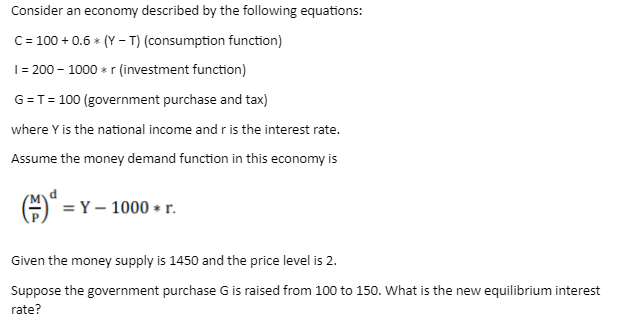Start learning 50% faster. Sign in now
Let father's age at marriage = x, mother's = y 6 years after marriage, family (father, mother, 4-year-old son) has average age = 28 Total age = 28 × 3 = 84 x+y+16 = 84 → x + y = 68 → (1) 6 years later (i.e. 12 years after marriage), son is 10, mother's age = y+12 Given: mother + son = 64 y+12+10=64 → y = 42 Plug into (1): x+42 = 68 → x = 26
In classical linear regression model if we add in 90 in X and Y observation and re-estimate the regression model then slope coefficient
Which of the following is not an assumption of Keynesian Simple model?
What is the standard deviation of first n natural numbers?
In a flexible exchange rate system, if domestic interest rate increases, then which of the following is true:
Which of the following could be a remedy for Multicollinearity Problem?
Expansionary fiscal policy in the classical model will cause aggregate demand to-----potential output?
What is the Capital to RiskWeighted Assets Ratio (CRAR) of scheduled commercial banks (SCBs) as of end March 2024 according to the Financial Stability R...
On a graph for a monopolist or monopolistic competitor, which of the following curves coincide?
Suppose the wedding dress industry is a perfectly competitive constant cost industry. Suppose also that market demand for wedding dresses is described b...
